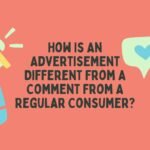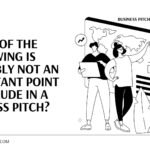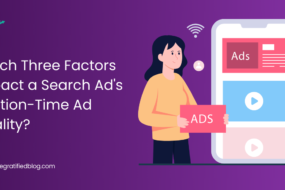
With the continuous advancement of technology, contemporary businesses are embracing diverse marketing and advertising methods to reach potential customers and boost sales. Although “Marketing vs. Advertising” is frequently debated, it is essential to recognize the clear distinctions between these two concepts.

However, marketing and advertising are integral to the success of companies, working in harmony to drive businesses of all scales toward their goals. From conventional media to digital marketing and social media, these methods effectively establish connections between companies and their target audiences, resulting in heightened brand visibility and revenue generation.
This blog will explore marketing and advertising, beginning with their definitions. We’ll delve into the marketing elements and various advertising types used for promotion. The differences between marketing and advertising will be emphasized, showcasing their distinct roles. Lastly, we’ll discuss the future of marketing and advertising to provide a comprehensive understanding of these vital business aspects.
Definition Of Marketing?
Marketing is a strategic process and business activity that involves profitably identifying, anticipating, and satisfying customer needs and wants. It encompasses various activities and techniques to create, communicate, deliver, and exchange value to customers, clients, partners, and society.
Elements Of Marketing
The marketing mix, often referred to as the “Four Ps,” represents the core elements of marketing strategy. They are the fundamental building blocks used to design and execute a successful marketing plan:
- Product: The product refers to what a business offers to fulfill customer needs and desires. It can be tangible goods or intangible services. Product decisions involve design, features, quality, branding, and packaging.
- Price: Pricing is the monetary value assigned to a product or service. Factors like production costs, competitor pricing, perceived value, and pricing strategies influence it. Finding the right balance between profitability and customer satisfaction is crucial in setting the price.
- Place: Place, also known as distribution, involves determining how and where products or services will be made available to customers. This includes decisions on distribution channels, retail outlets, logistics, and inventory management.
- Promotion: Promotion encompasses all communication efforts to make customers aware of a product or service and persuade them to purchase. It involves advertising, public relations, sales promotions, direct marketing, and other promotional techniques.
Definition Of Advertising?
Advertising is a specific component of the marketing process that deals with creating and disseminating persuasive messages to a target audience through various paid communication channels.
The primary role of advertising is to raise awareness, inform, educate, and influence consumer behavior, ultimately leading to the promotion of a product, service, or idea.
Types Of Advertising
Advertising has evolved and encompasses various formats and platforms to reach diverse audiences. Some of the common types of advertising include:
- Traditional Advertising: This includes traditional media channels like television, radio, newspapers, magazines, billboards, and direct mail. Traditional advertising has a broad reach and has been used for decades to deliver brand messages to mass audiences.
- Digital Advertising: With the advent of the internet and digital technologies, advertising has shifted to online platforms. Digital advertising includes various forms, such as display ads, banner ads, pop-ups, and video ads, and can be tailored to specific demographics and interests.
- Social Media Advertising: This advertising leverages social media platforms like Facebook, Instagram, Twitter, and LinkedIn to reach target audiences. Social media ads are highly targeted and allow businesses to engage with potential customers directly.
- Native Advertising: Native advertising is a form of advertising that blends seamlessly with the content of the platform on which it appears. It aims to provide value to the audience while subtly promoting a product or brand.
- Influencer Marketing: In this approach, brands collaborate with influencers or individuals with a substantial social media following to promote their products or services. Influencers act as trusted endorsers, influencing the purchase decisions of their followers.
- Content Marketing: Content marketing involves creating valuable and relevant content, such as articles, videos, and infographics, to attract and engage a target audience. While not directly promotional, content marketing aims to build brand awareness and trust.
Marketing Vs. Advertising: Differences Between Both?
Purpose And Scope
- Marketing
The primary purpose of marketing is to build long-term customer relationships and create value for customers, leading to brand loyalty and repeat business. Marketing takes a broader view of the entire business and its offerings, considering various factors like product development, pricing, distribution, and customer service. It aims to understand customer needs and desires, identify market opportunities, and develop strategies to fulfill those needs profitably over an extended period.
Example: A company focusing on marketing will invest in market research to identify customer preferences, conduct surveys to understand satisfaction levels, and use the insights to tailor products and services to meet those preferences. By doing so, they build strong customer loyalty and retain customers over time.
- Advertising
Conversely, advertising focuses on short-term promotional activities to drive immediate sales and create brand awareness. It is a specific component of marketing that involves delivering persuasive messages to a target audience through various paid communication channels. The primary goal of advertising is to generate interest and encourage customers to take action, such as making a purchase, visiting a website, or signing up for a service.
Example: A company launching a new product might invest in advertising to create buzz and excitement around the product’s release. They can attract customers to try the product through advertising campaigns and increase sales during the initial launch period.
Focus
- Marketing
Marketing takes a holistic approach and considers all aspects of the business. It goes beyond just promotion and involves product development, pricing, distribution, and customer relationship management. Marketing focuses on understanding the target market, identifying customer needs, and creating products and services that fulfill those needs effectively.
Example: A marketing-oriented company will create an appealing advertising campaign and ensure that the product is high quality, reasonably priced, and available at convenient locations to effectively meet customer demands.
- Advertising
Advertising, on the other hand, concentrates on communicating the brand message and promoting products or services. While it is an essential aspect of marketing, advertising alone does not encompass all the elements involved in the marketing process.
Example: A company might invest heavily in advertising to create brand awareness and attract customers to its new smartphone model. However, if the product needs more quality and the price is competitive, the advertising efforts might lead to sustained success.
Strategy And Tactics
- Marketing
Marketing involves strategic planning and market research. It requires analyzing market trends, understanding consumer behavior, identifying target segments, and developing a long-term plan to achieve business objectives. Marketing strategies are comprehensive and consider the entire customer journey, from awareness to purchase.
Example: A marketing strategy for a new fashion brand might involve identifying the target audience (e.g., young professionals), understanding their preferences, and positioning the brand as affordable and trendy. It would encompass decisions on product design, pricing, distribution, and communication channels.
- Advertising
Advertising focuses on the tactical execution of promotional messages to achieve specific campaign goals. It includes choosing the proper advertising channels, creating compelling ad copies, and scheduling campaigns for maximum impact.
Example: An advertising tactic could involve running social media ads to promote a limited-time discount on a product. The goal is to drive immediate sales during the promotional period.
Timeframe And Goals
- Marketing
Marketing strategies aim to achieve long-term goals, such as building brand equity, increasing market share, and fostering customer loyalty. The focus is on sustainable growth and maintaining a competitive advantage in the market.
Example: A marketing-oriented company might aim to become the top provider of eco-friendly household products within the next five years. To achieve this goal, they will continuously improve their offerings, expand their customer base, and nurture long-term customer relationships.
- Advertising
Advertising, being more short-term, aims for immediate impact and specific campaign goals. It is often used to support marketing objectives by creating brand awareness, driving sales during promotions, or introducing new products.
Example: An advertising campaign for a restaurant may run for a few weeks to promote a special holiday menu and increase foot traffic during the festive season. The goal is to attract customers to the restaurant during that specific period.
In short, marketing and advertising are closely related but distinct components of a comprehensive business strategy. Now, let’s delve into the future of these two crucial elements.
The Future Of Marketing And Advertising
The future of marketing and advertising is anticipated to be shaped by technological advancements and evolving consumer preferences.
Technological Advancements
As technology evolves, marketing and advertising will heavily rely on digital tools and platforms. Artificial intelligence (AI) and machine learning will enable more personalized and targeted marketing efforts, tailoring content to individual preferences and behaviors. Automation will streamline processes, allowing marketers to focus on strategic planning and creativity. Additionally, immersive technologies like virtual reality (VR) and augmented reality (AR) will offer new opportunities for engaging and interactive brand experiences.
Evolving Consumer Preferences
Consumers’ expectations and preferences continually change, and businesses must adapt their marketing and advertising approaches accordingly. The rise of social media and influencer marketing will continue to impact how brands reach and engage with their audiences. Ethical considerations like data privacy and social responsibility will become more critical as consumers demand brand transparency and authenticity. Marketers will need to be agile and responsive to stay relevant and build lasting relationships with their customers in the dynamic landscape of the future.
Conclusion
Successful organizations employ various advertising methods as part of their overall marketing strategy. This is especially true for multinational corporations, whose marketing strategy and advertisement placement must consider worldwide clients. It also applies to small and medium firms, especially now that digital advertising via search engines and social media is more affordable.
There are instances when marketing is more important than advertising. Priority should be given to designing a marketing strategy for startups and other new enterprises. If the firms spend an unreasonable amount of money on advertising initially — without a defined or sustainable marketing strategy — the result might be disastrous.
At the start of a business’s existence, it is critical to establish and implement a marketing strategy based on client wants and needs. Thus, future marketing and advertising activities will have a more defined process and a greater likelihood of success.








No Comments